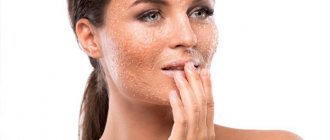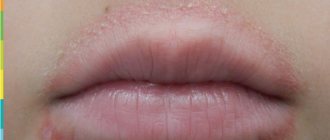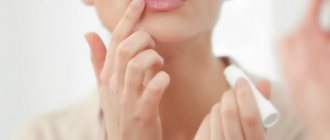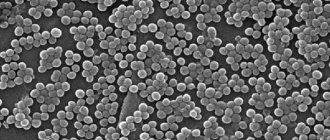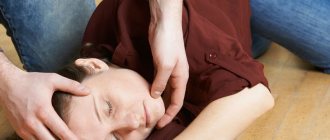Ringworm in humans has a different nature; it can be either an infectious or non-infectious disease. It manifests itself as spots of different colors, swelling, itching, and painful sensations. Requires immediate treatment to avoid negative consequences. At the same time, contacting a dermatologist is mandatory, since there are 7 types of lichen, and it is almost impossible to make a diagnosis without a visit to a specialist.
Ringworm in humans: causes and types
This pathology is related to the skin. It is observed in both adults and children of any age. Most often, the disease is contagious, so people with weak immune systems are especially at risk.
Ringworm can be transmitted from cats, dogs and other infected animals. But this disease may have other causes:
- weakened immunity due to previous infection;
- frequent psychological stress, stress;
- violation of personal hygiene rules;
- poor environmental conditions;
- disorders of the nervous system;
- disruptions in the hormonal system.
Depending on the causes and manifestations in humans, there are 7 types of lichen:
- Shingles: occurs against the background of an exacerbation of the herpes virus. It appears as spots on the intercostal area, next to the main nerve pathways. May not show any symptoms for 2 or 3 weeks. The ocular variety is especially dangerous, since in this case, if left untreated, you can lose your vision.
- Ringworm (also called trichophytosis) affects the skin of the head, neck, and shoulder area. Often observed in children. The disease is caused by fungi and occurs due to infection from a sick person or animal (contact-household route).
- Pink, which is also called Gibert's disease, occurs due to the herpes virus, mainly in spring and autumn. Characterized by pink spots on the limbs and groin area.
- Pityriasis develops due to microscopic fungi, mainly in the summer. As a result, spots of different colors appear on the skin - pink, yellow, brown. There is no inflammation, but the skin is peeling. It very often affects the back. If nothing is done, this form can become chronic.
- Lichen planus is a rare type of lichen that develops on the mucous membranes of different parts of the body, in the mouth, on the forearm and limbs. If left untreated, it can completely destroy the nails.
- White (also called solar) is the weakest form of lichen, which can develop over several years. The cause of the appearance is infection with yeast fungi. Most often it affects children and young people under 30 years of age. Mainly affects the skin surfaces of the chest and scalp. This form has nothing to do with the sun, but the white spots are clearly visible against the background of a tan, which explains the name of the disease.
- Scaly (second name is psoriasis) is a non-infectious lichen associated with autoimmune processes. A dangerous form that, if left untreated, can lead to arthritis.
Symptoms of lichen
Each type of lichen has its own clinical picture and severity. Regardless of the type, lichen has common symptoms:
- Depigmentation – changes in skin tone in areas where lesions are localized;
- Peeling is a hallmark of lichen;
- Itching and pain occur with almost all types of lichen.
Depending on the pathogen, the localization of skin formations and the course of the disease may vary.
- Pityriasis rosea - spots on the human body can be located on any segment of the skin, have a scarlet tint, are round or oval in shape, have a clear edge of a burgundy shade that rises above the level of healthy skin. There is little or no itching.
- Lichen planus – the appearance of a red rash (nodules). Papules have a sunken center and can merge, affecting large areas of the skin. A characteristic feature is the shiny shine of the rash. Ringworm causes itching and discomfort.
- Solar (multi-colored/colored/pityriasis versicolor) - the spots have different shades depending on the skin type, so on light skin the spots acquire a brownish tint, and on dark or tanned skin - light shades (beige, yellow, pink). There is no itching in this type; its occurrence means the addition of an infection.
- Herpes zoster - before the appearance of the rash, there is a deterioration in the condition, the symptoms are similar to the development of acute respiratory infections, acute respiratory viral infections; swelling and tingling of the skin in areas of future rash. A few days later, a bright red rash appears, with burning, severe pain and itching.
- Ringworm is often localized on skin segments covered with hair. Pinkish spots are formed, up to seven centimeters in size, a characteristic feature is peeling, similar to the manifestation of seborrhea (dandruff), the spots rise on the rest of the skin, have a clear edge, strewn with small rashes, and crusts form as the disease progresses. Ringworm is accompanied by severe itching.
Despite the characteristic signs, some types can be confused with other skin pathologies - vitiligo, roseola, measles, herpes, syphilis. An accurate diagnosis can only be made by a specialist, often a dermatologist.
The course of the disease varies depending on the forms and severity.
What does lichen look like in humans?
The external manifestation of the pathology is obvious - lichen is accompanied by a number of signs:
- rash in the form of spots of different colors - red, pink, brownish, yellow;
- itching, burning, unpleasant (painful) sensations;
- scales, bubble formations on spots;
- bald spots on the head in the hairline area (clipping form);
- fever (rare);
- malaise, lethargy.
Prevention of lichen
To avoid the occurrence of lichen, the following recommendations should be followed:
- Maintain immunity - in the autumn-spring period and after frequent respiratory diseases;
- Avoid hypothermia;
- Eliminate allergens;
- Use products to combat excessive sweating;
- Wear clothes made from natural fabrics;
- Choose skin care cosmetics that suit your skin type;
- Avoid prolonged stress;
- Do not contact with infected people and stray animals;
- Treat chronic and acute diseases.
If infection occurs, for a speedy recovery you should:
- During treatment, replace taking a bath or shower. Prolonged stay in water promotes the spread of lesions and can cause infection;
- Do not scratch itchy areas, take antihistamines to eliminate the feeling of itching;
- Change your diet - eliminate fatty and spicy foods, eat more vegetables and fruits;
- Wash the patient’s underwear and bedding in hot water and iron after drying;
- Clean the room, paying special attention to carpets and soft toys;
- Avoid prolonged exposure to the sun; high temperatures are a favorable environment for the development of fungi;
- Use mild detergents, avoid rough washcloths, scrubs, and peels.
Following all the doctor’s recommendations and taking preventive measures will facilitate a quick recovery and will also help avoid relapses.
Ringworm on the skin: treatment
Treatment of the disease is especially effective at an early stage. Ringworm can be cured in all patients, regardless of age. In this case, you need to consult a doctor even with minor manifestations. For diagnostic purposes, a dermatologist conducts a visual or instrumental examination (using a special lamp), prescribes a series of tests - studying urine, blood, as well as immunological studies and skin scrapings.
After establishing the exact cause and type of lichen, treatment is prescribed. Most often it is associated with the use of special ointments externally (antifungal drugs). The course of therapy lasts from 2 weeks to 3-4 months.
Main areas of treatment:
- Etiotropic – the use of drugs that eliminate the cause of the disease. These can be fungicides or antiviral agents (based on Acyclovir).
- Elimination of itching, spots and other unpleasant symptoms.
- Carrying out procedures - UV therapy, physiotherapy, increasing resistance (strengthening the immune system), maintaining personal hygiene.
- In rare cases, it is necessary to disinfect the premises, especially linen, furniture, and personal belongings.
It is not recommended to treat lichen yourself at home. This is dangerous because you can waste time and also infect other people. In addition, the patient often cannot determine which drug to treat the pathology with. For example, a person “prescribes” an antimicrobial ointment while he develops herpetic (viral) lichen. In rare cases, lost time can result in severe consequences such as blindness, arthritis, and other complications.
Onion and garlic
Onions contain many useful components, among which phytoncides are especially valued in the treatment of fungal diseases - substances that can kill pathogenic microorganisms. Also, the bactericidal and antiseptic properties of onions are effective for lichen. There are several ways to use it:
- With burdock oil. Grate the onion on a fine grater or puree it in a blender until it becomes a paste, add half a glass of burdock oil purchased at the pharmacy. Apply to the rashes in the evening, before bed, leave for half an hour, and wash off the residue with warm water.
- Juice. To squeeze juice out of an onion, simply grind it in a blender, then squeeze it out with gauze and remove the remainder. Dilute with water in a 1:1 ratio and lubricate the skin several times a day.
- Compress. Cut the onion in half, fry one part over the fire, prick it with a fork, and apply it to the affected area. We fix the onion half with a bandage, a tight bandage, and leave it overnight.
Garlic also has a lot of beneficial properties that help fight, including fungal diseases. You can use it in different ways:
- cut the slice in half, grease the rash;
- mix with Vaseline in equal parts, apply as an ointment;
- Infuse chopped garlic in apple cider vinegar and make compresses.
Important! Onions and garlic, although they have medicinal properties, can be harsh on the skin. If itching increases, painful sensations appear, or if you have hypersensitive skin, you should not use them.
Benefits of treatment
Folk remedies are a good alternative to expensive ones from the pharmacy. Healers have a large number of working recipes, the undoubted advantages of which are:
- the presence of harmless components in the composition to suppress yeast-like fungi and viruses;
- providing a natural antibiotic, immunomodulatory, antifungal effect;
- absence of contraindications, if you do not take into account individual intolerance to individual components;
- rapid elimination of rashes, inhibition of pathogenic microflora, acceleration of skin renewal and healing;
- affordable price;
- ease of use in the comfort of your home.
Reference! External prescriptions are first aid at the initial stage of the disease. It contains natural antiseptics and antibiotics with a gentle effect to neutralize pathogenic microflora and disinfect the epidermis.
This is important for pregnant women and children, for whom many pharmaceutical products are unavailable due to contraindications or side effects.
Folk recipes
There are many recipes for external use, suppressing pathogenic pathogens, and restoring the dermis. The main thing is to use suitable options at the initial stage of the disease, so that in case of complications you do not have to resort to more expensive, aggressive pharmaceutical drugs:
1 Garlic. Grind a couple of cloves into a paste, add linden honey. Apply to plaques for up to 3 weeks in a row.
250g lard, 50g pork brain, 3g salicylic acid. Melt the ingredients in a water bath and stir. Apply to the epidermis while warm, wrapping it with polyethylene on top. Leave for 3 hours, wash off with soapy water.
Pour 350g of walnut leaves into a glass of water. Simmer over low heat for 30 minutes. Pour the broth into the bath, soak your hands or feet until the itching disappears, 2 times a day.
4White mustard. Pour 30g of water and leave for 3-4 hours. Grind into pulp. Apply in the evening to the dermis, leaving until the morning. Course - 5-10 days.
5Iodine is an effective way to eliminate infection at an early stage. Treat the affected areas carefully, avoiding dryness and burns on the body.
6Birch tar. Mix with ashes in a ratio of three to one. Apply the resulting mixture and let it sit for 3 hours. Rinse off with warm water. Course - 1 week. Tar can be combined with fish oil mixtures - one to one, spreading the mixture in a gauze bandage and locally to the spots. For cutting, it is effective to use concentrated tar with the addition of salicylic acid. For pink lichen, a recipe with butter is suitable, providing moisturizing and antiseptic properties.
Solutions and tinctures for external use
There are many known folk remedies for lichen, so everyone who is sick can choose an acceptable option for themselves, which is no less effective than expensive pharmaceutical drugs.
Component
Recipe
Mode of application
Lilac
Flowers – rinse 100 g, combine with a glass of vodka. Leave in the dark for 10 days
Use as a tincture on affected areas of the body
Birch buds
Infuse in boiling water (1×1), simmer for 15 minutes, cool. Strain
Apply to sore spots
Pollen from a mature puffball mushroom
Mix with vodka, keep in the dark for 10 days
Treat outbreaks
Garlic
Grind 100 g of product, add a glass of castor oil. Simmer in the oven for 2.5 hours, strain
Lubricate affected areas twice a day
Propolis
Pour medical alcohol – 200 g into 50 g, leave for 7 days in a dark place
Treat lesions with cutting type
Calendula and castor oil
Mix 1x1
Carry out procedures 2-3 times a week
Celandine
20 g of herb, add 1 glass of water, soak in a water bath for 20 minutes, cool
Soak a cotton pad in the broth and wipe the affected areas
Celandine
Pour 300g of celandine into 100g. alcohol Stand in a dark place for 21 days
Wipe the affected areas twice a day
Peas
Pour 100 g of boiled water – 1 glass. Simmer over low heat for a quarter of an hour
Apply decoction to lichen spots
Aloe
Chop the leaves, add cold water and leave
Wipe flaky areas
Plantain and yarrow
Take 1x1 leaves, chop, squeeze out the juice. Memory. Wrap the mixture in cheesecloth
Apply to pink-whitish spots for 30 minutes, repeat three times a day
You can take 10-minute baths when treating ringworm with vinegar.
Wormwood has proven itself to be excellent in therapy. Its strong decoction can be used as a rub.
An old newspaper can also help with illness. It needs to be rolled up and tied with thread. Place the turret on a plate and set the top on fire.
The result is a dark brown liquid. She needs to lubricate the sore spots warm 2-3 times a day.
Compresses
Garlic is a natural antiseptic. Quickly suppresses fungus and returns the skin to its previous appearance if applied as a compress. Garlic can be combined with honey and lemon to neutralize the pathogen and restore the integrity of the dermis.
Garlic vinegar
Pour 3 cloves of garlic with 1 glass of apple cider vinegar. Leave in the dark for 14 days. Moisten the affected areas. In the morning, change the compress to a new one.
Garlic and honey
Combine 2-3 cloves with honey until smooth. You can add apple cider vinegar. Lubricate lichen plaques for up to 2-3 weeks in a row.
You can rub garlic in its pure form or combine it with lemon to make a paste.
Boric acid.
1 tsp add a couple of glasses of cold water. Keep on fire until dissolved. Soak cotton swabs and apply for up to 6 days in a row. On day 7, you should wash, change clothes, and then repeat the course of treatments.
Herbal mixture
Rose petals, blackberry leaves, calendula flowers, horsetail. Take equally 2 tbsp. l., pour 300 ml of boiling water, simmer over low heat. Moisten gauze and apply to sore spots when treating the pink type of disease.
Sagebrush
2 tbsp. l. herbs pour 200 ml of boiling water, leave under the lid. Moisten the gauze bandage and apply for 7 days.
Beetroot with honey
Grate the beets, add honey in a 1x1 ratio. Apply the compress to the affected areas, covering the top with film.
Sea buckthorn oil will help with the flat type of pathology. Moisten gauze bandages and apply to the body as a therapeutic compress.
The acid in lemon helps a lot. You can apply fresh fruit slices, leaving them on the skin for a few seconds, repeating the procedure every 3 hours.
Rashes and lichen spots disappear from ordinary table salt by moistening it with your own saliva.
Reference! The ancient method of control is unusual: collecting condensed moisture from window glass. It is enough to blow hot air on the window, collect drops of condensation and treat the rashes twice a day.
Homemade ointments and creams
Ointments and creams are widely used in the treatment of lichen in humans. They have a thick consistency, so they will not spread and are perfectly absorbed.
1Salt and soda. Stir, dilute with water. Rub in twice – morning and evening.
2 Celandine and rendered internal lard (1x1). Carry out processing. Store the healing ointment in the refrigerator.
3Hops, burdock and calendula. Prepare a decoction by pouring boiling water over it and simmering for a few minutes over low heat. Add pharmaceutical Vaseline. Use as an ointment.
4Burning brimstone. Grind to a fine powder, mix with boric ointment and lanolin (1x3). Apply ointment 2 times a day.
Birch buds
Melt 500 g of lard, add 1 cup of kidneys. Place in the oven for 3 hours in a clay dish. Cool, drain the fat into a glass pharmacy container.
Treat affected areas twice a day.
A decoction with wound-healing and antibacterial properties is prepared from birch buds and added to baths for eczema and dermatitis.
Propolis and vegetable oil
Mix 20 g with 100 g of oil or Vaseline, heat in a water bath, leave for 24 hours. Mix and rub into affected areas.
You can use an alcoholic propolis composition by mixing it with any fat base.
Celandine
It helps well with fungal pathology at an early stage, has anti-inflammatory and analgesic properties. Add petroleum jelly and 30g lanolin to 40g of crushed herb, mix and apply on lichen 2 times a day.
Also combine celandine juice with melted lard, spreading it on the hearths twice a day.
An interesting recipe is based on tar and ash after burning a birch log. Mix the components (3x1), apply to the affected areas of the dermis, leaving for up to 3 hours to get rid of psoriasis, a scaly type of pathology.
How to protect your baby from infection?
Instill in your child the rules of personal hygiene and make sure they follow them: wash your hands after playing outside or with animals, keep your shoes clean, and much more.
Explain to your child that you cannot use other people's things - for example, clothes, a hat or a comb.
Try to exclude your child from contact with stray animals: explain that you cannot pet a street kitten or puppy.
Have you decided to get a pet: a cat, a dog, a hamster or a parrot? Wonderful! However, be sure to visit a veterinarian first so that he can examine the new family member.
If you already have a pet, regularly examine it yourself and take it to the veterinarian.
Do not leave baby strollers on the landing or outside. Homeless, sick animals, having settled comfortably in them for the night, can leave behind a “gift” in the form of fungus.
Abrasions, scratches, puncture or incised wounds are an easy way for pathogens to enter. Therefore, treat any wounds with antiseptics containing iodine, which has a detrimental effect on both bacteria and fungi.
